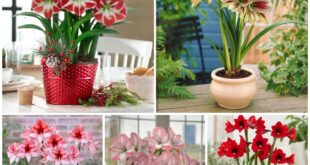Rustic garden design evokes a sense of nostalgia and simplicity, celebrating the beauty of nature in its most unrefined form. Characterized by natural materials, organic shapes, and a harmonious blend of plants and hardscapes, rustic gardens offer a tranquil escape from the modern world. This article delves into the essential elements and principles of rustic garden design, providing inspiration for those looking to create their own pastoral paradise.
Key Elements of Rustic Garden Design
- Natural Materials Rustic gardens make use of materials that blend seamlessly with the landscape. Think weathered wood, rough stone, terra cotta, and wrought iron. These materials age gracefully, developing a patina that enhances the garden’s vintage appeal. Reclaimed wood and stone can be particularly effective, lending an authentic aged look to structures like pergolas, arbors, and fences.
- Organic Shapes In contrast to formal gardens with their rigid lines and symmetry, rustic gardens favor flowing, organic shapes. Paths meander rather than follow straight lines, and plant beds have irregular, naturalistic boundaries. This approach mimics the spontaneity of nature, creating a relaxed and inviting atmosphere.
- Diverse Plantings Plant selection is crucial in achieving a rustic look. Choose a mix of perennials, shrubs, and trees that offer varying textures, colors, and forms. Native plants often work well, as they are adapted to the local climate and soil conditions, and they provide habitat for wildlife. Wildflowers, herbs, and ornamental grasses can add to the informal, cottage-garden feel.
- Functional Decor Rustic gardens often incorporate functional elements that enhance the garden’s usability while contributing to its aesthetic. Items like wooden benches, stone birdbaths, vintage watering cans, and iron trellises not only serve a purpose but also add to the garden’s charm. Repurposing old farm tools or household items as garden art can add a personal touch.
- Water Features Water elements such as ponds, streams, or simple birdbaths can bring a sense of calm and provide a focal point in a rustic garden. A stone-edged pond with water lilies or a gently bubbling brook can enhance the natural ambiance. These features attract wildlife, adding life and movement to the garden.
- Wildlife-Friendly Habitats Encouraging wildlife is a hallmark of rustic garden design. Birdhouses, bat boxes, and insect hotels can provide shelter for beneficial creatures. Planting a variety of flowers ensures a supply of nectar for bees and butterflies, while berry-producing shrubs offer food for birds. A garden alive with wildlife feels more vibrant and connected to the natural world.
Designing Your Rustic Garden
Creating a rustic garden begins with a vision of the space you want to achieve. Here are some steps to guide you through the process:
- Plan Your Space Start with a rough sketch of your garden layout. Identify areas for seating, planting, pathways, and any features like ponds or pergolas. Consider the natural topography and existing features of your garden, working with them rather than against them.
- Choose Your Materials Select materials that will give your garden a cohesive look. Weathered wood, natural stone, and aged metals should be prioritized. Visit salvage yards or antique shops for unique finds that can be repurposed in your garden.
- Plant Selection Opt for a mix of native plants and old-fashioned favorites. Consider plants that provide year-round interest, such as evergreens, flowering shrubs, and plants with interesting foliage or seed heads. Aim for a balance of color, texture, and form.
- Incorporate Functional Decor Think about how you will use your garden. Include seating areas, pathways, and decorative elements that enhance both the functionality and beauty of the space. Items like rustic benches, stone paths, and vintage garden tools can be both practical and charming.
- Add Water Features If space and budget allow, consider adding a water feature. It can be as simple as a small birdbath or as elaborate as a pond with a waterfall. Ensure it fits naturally into the landscape.
- Encourage Wildlife Plant a variety of flowers and shrubs that provide food and shelter for wildlife. Install bird feeders, houses, and baths to attract birds. Create habitats for beneficial insects and other creatures to promote a healthy garden ecosystem.
Maintaining a Rustic Garden
Rustic gardens are designed to look natural and somewhat wild, but they still require regular maintenance to thrive. Here are some tips for keeping your rustic garden in top shape:
- Pruning and Trimming: Regularly prune shrubs and trees to maintain their shape and health. Deadhead flowers to encourage more blooms and remove spent foliage to keep the garden tidy.
- Weeding: Stay on top of weeds to prevent them from overtaking your garden beds. Mulching can help suppress weeds and retain soil moisture.
- Watering: Ensure your plants receive adequate water, especially during dry spells. Water deeply and less frequently to encourage deep root growth.
- Soil Care: Enrich your soil with compost or organic matter to promote healthy plant growth. Test your soil periodically to check for nutrient deficiencies.
 careyfashion.com Carey Fashion
careyfashion.com Carey Fashion


























